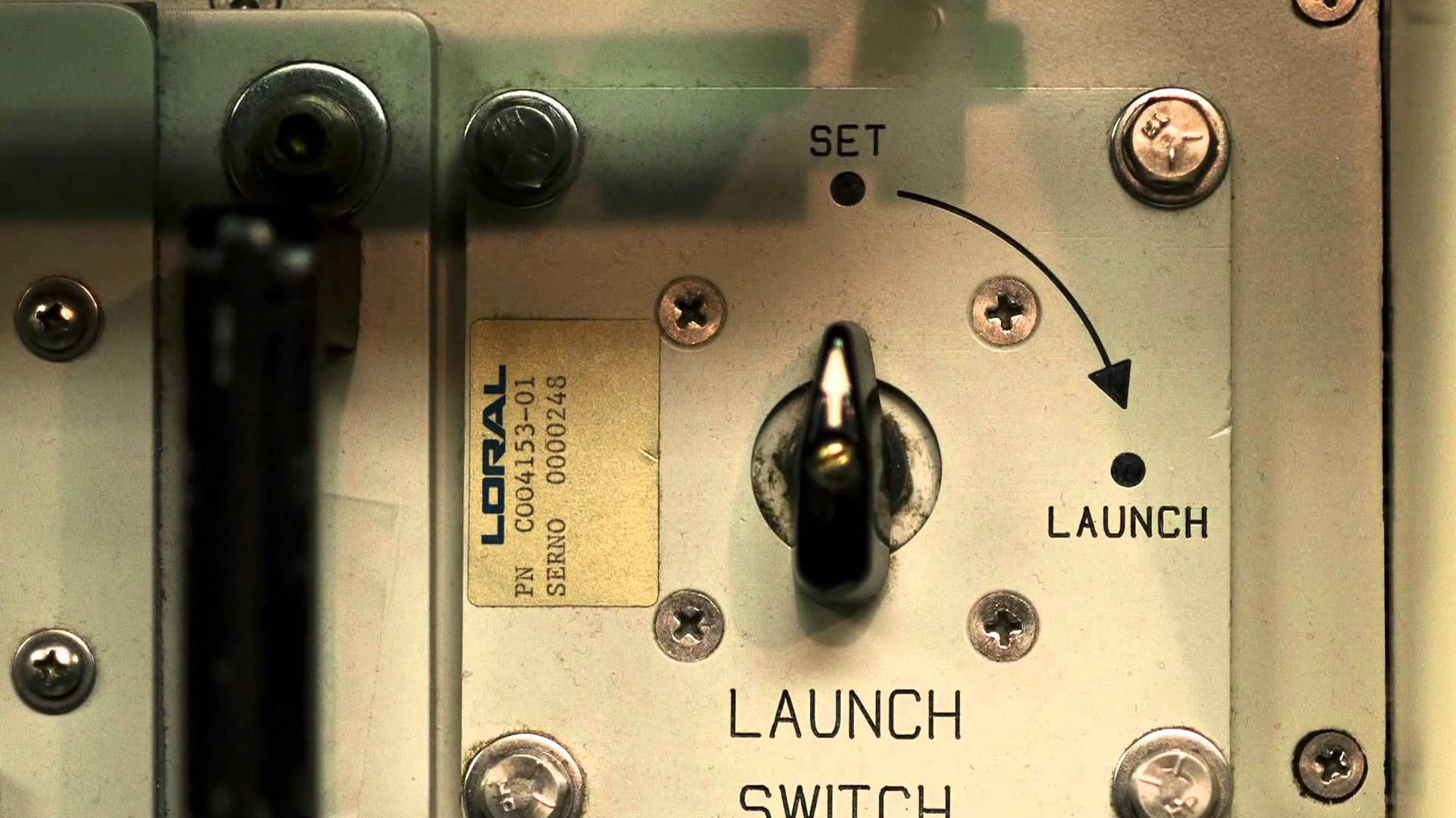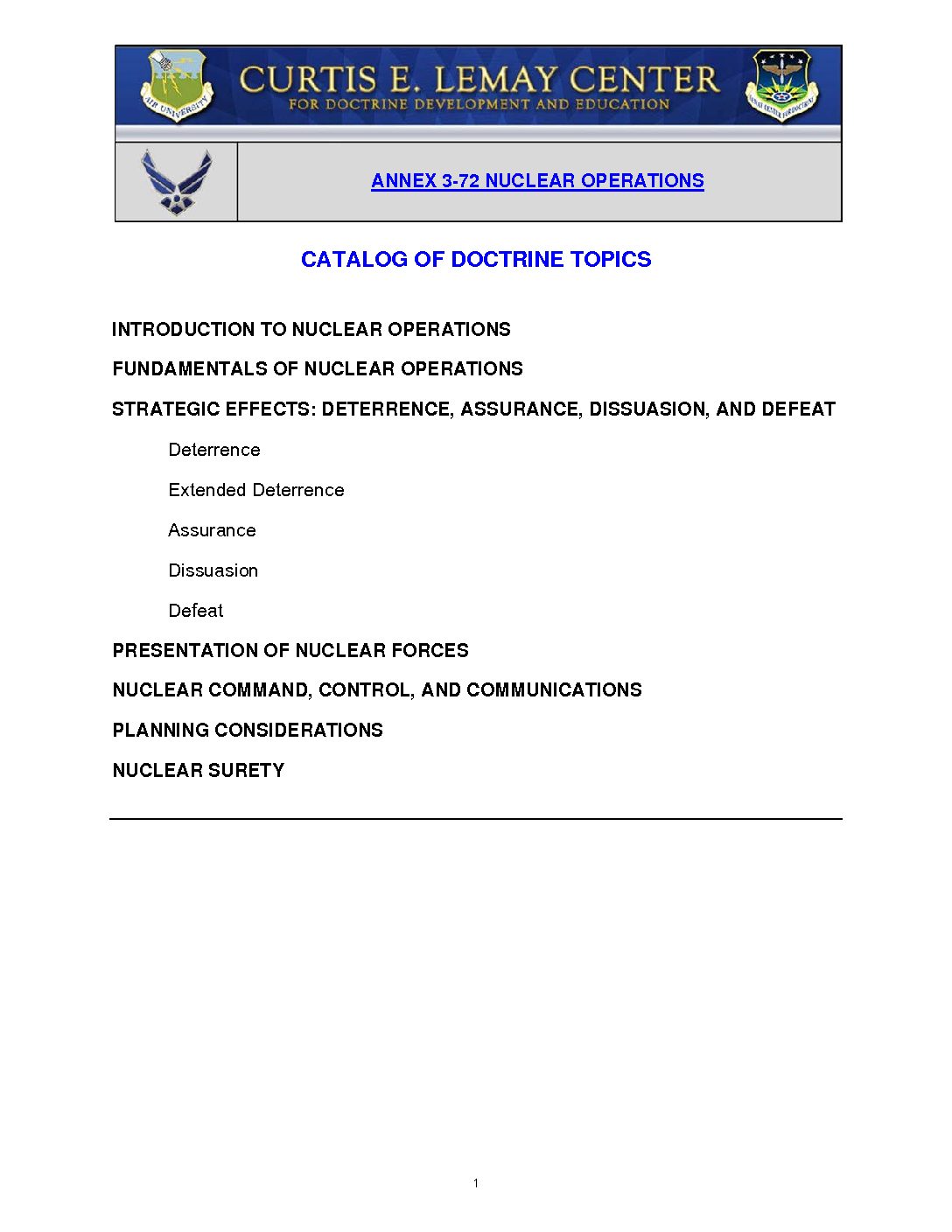Date
May 19, 2015
Document
- View PDF (910 KB)
Description
US Air Force nuclear operations doctrine was created by and distributed through the Curtis E. LeMay Center for Doctrine Development and Education. The document is a rare piece of doctrine that purports to describe nuclear launch procedure.
Commentary
Citation
United States Air Force, Curtis LeMay Center for Doctrine, “Annex 3-72, Nuclear Operations,” (19 May 2015).
Provenance
US Air Force. (Note that because the security certificate is self-signed, many browsers will claim this is a dangerous link. It is not and the security warning can be overridden.)
Topics
2010s | Doctrine | Nuclear launch procedure | Nuclear safety | Presidential nuclear control | US Air Force | United States of America
Document entry started by Alex Wellerstein on May 12, 2018. Entry last updated by Mikael Kelly on October 13, 2018.


Particularly relevant passages related to nuclear launch include the following:
The document also touches on the civilian-military division, the planning considerations for the use of nuclear weapons, and nuclear safety and surety.